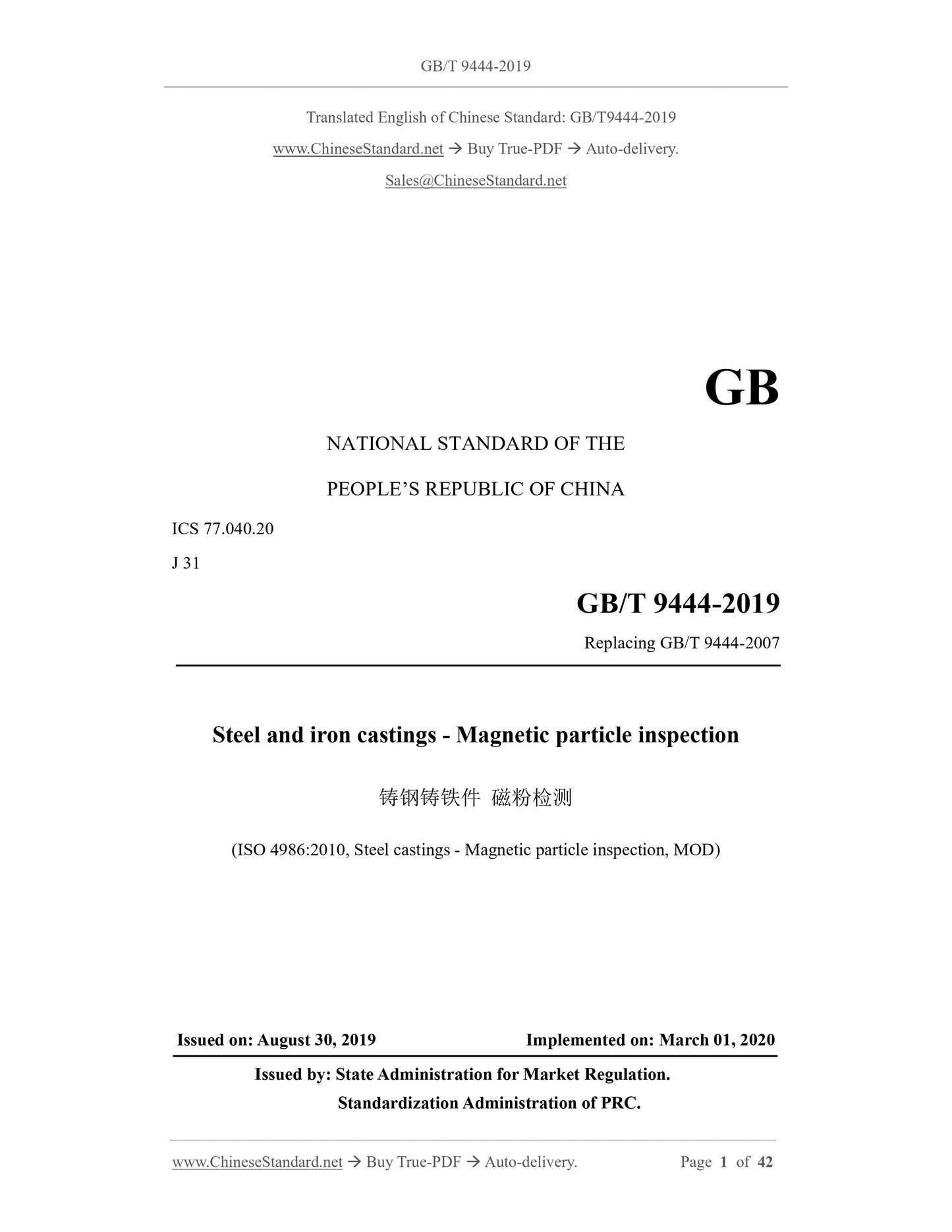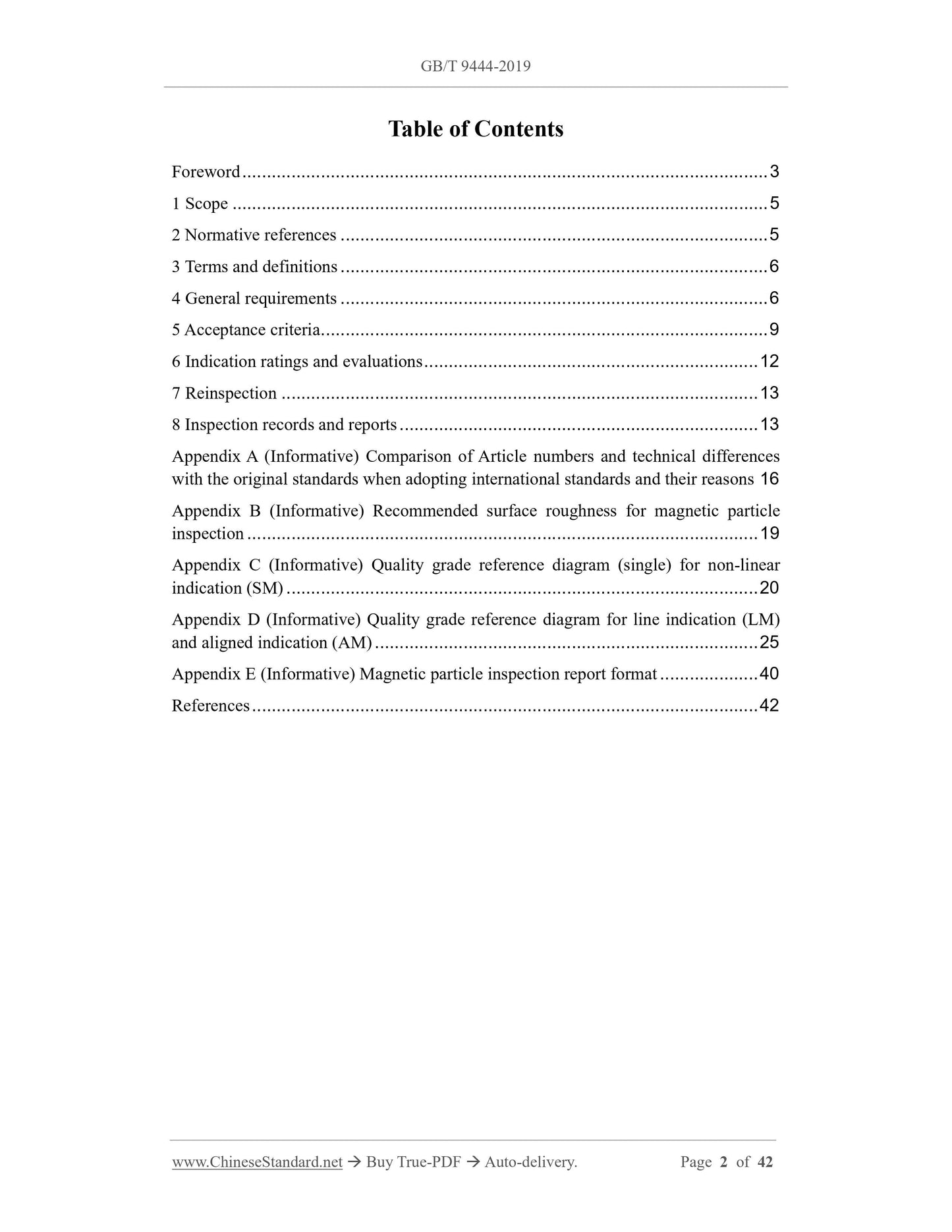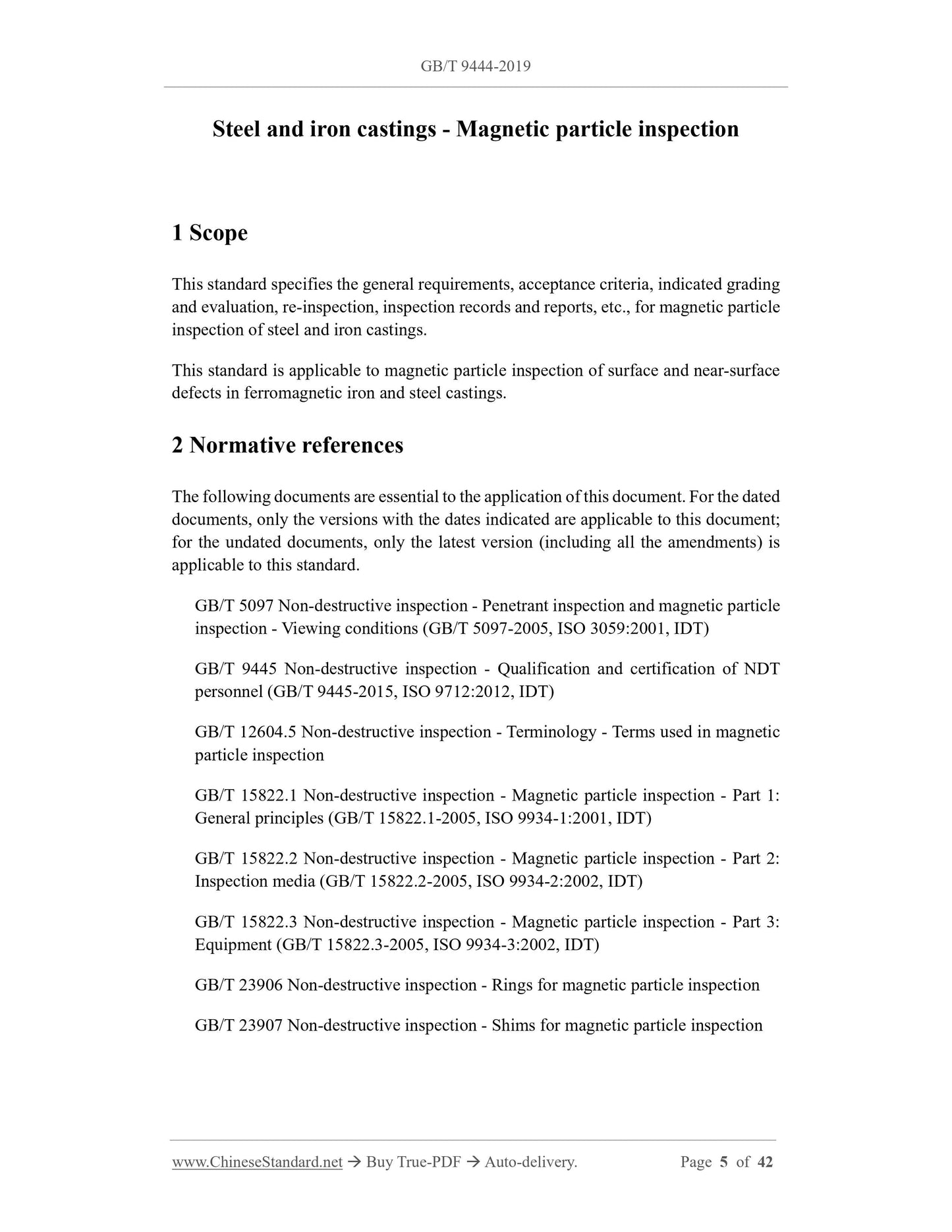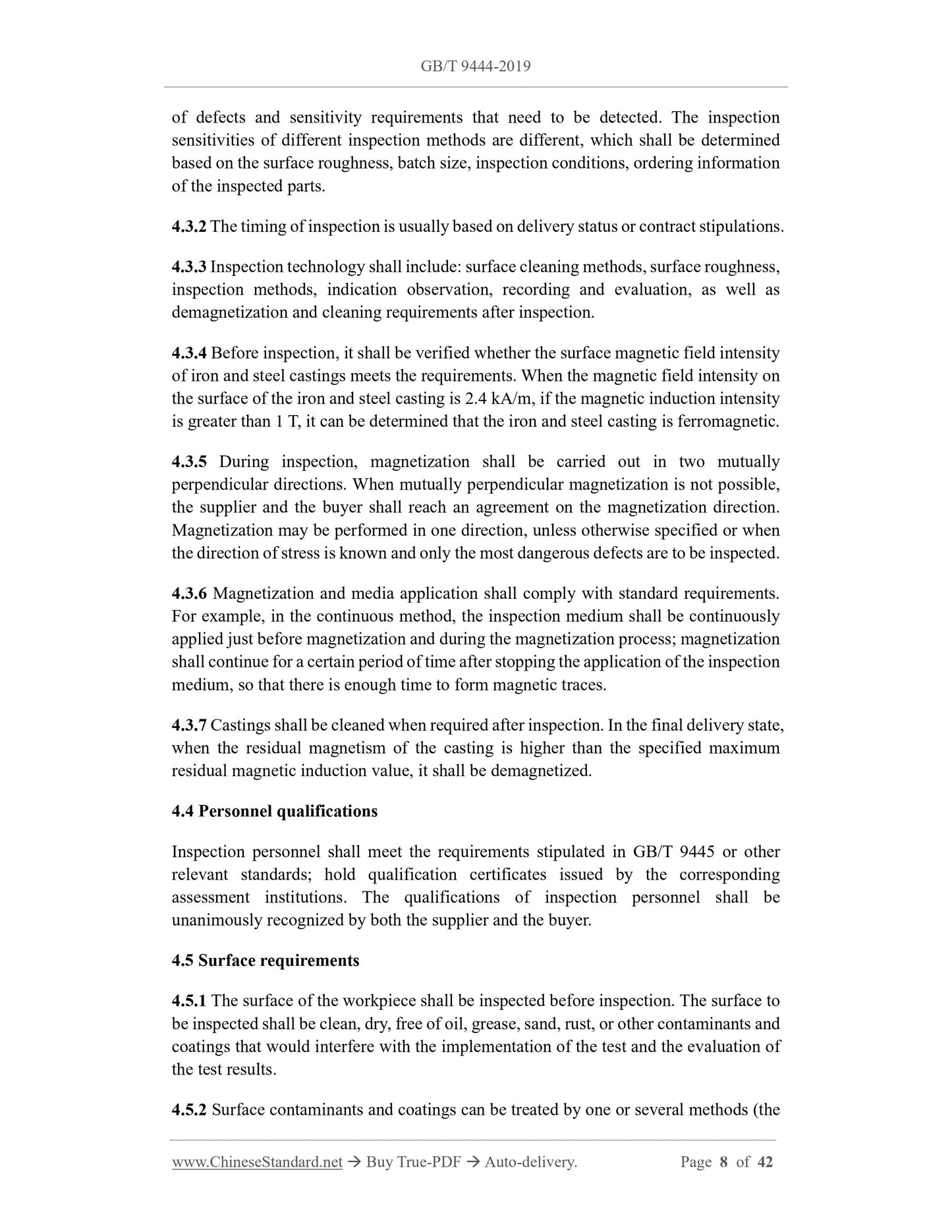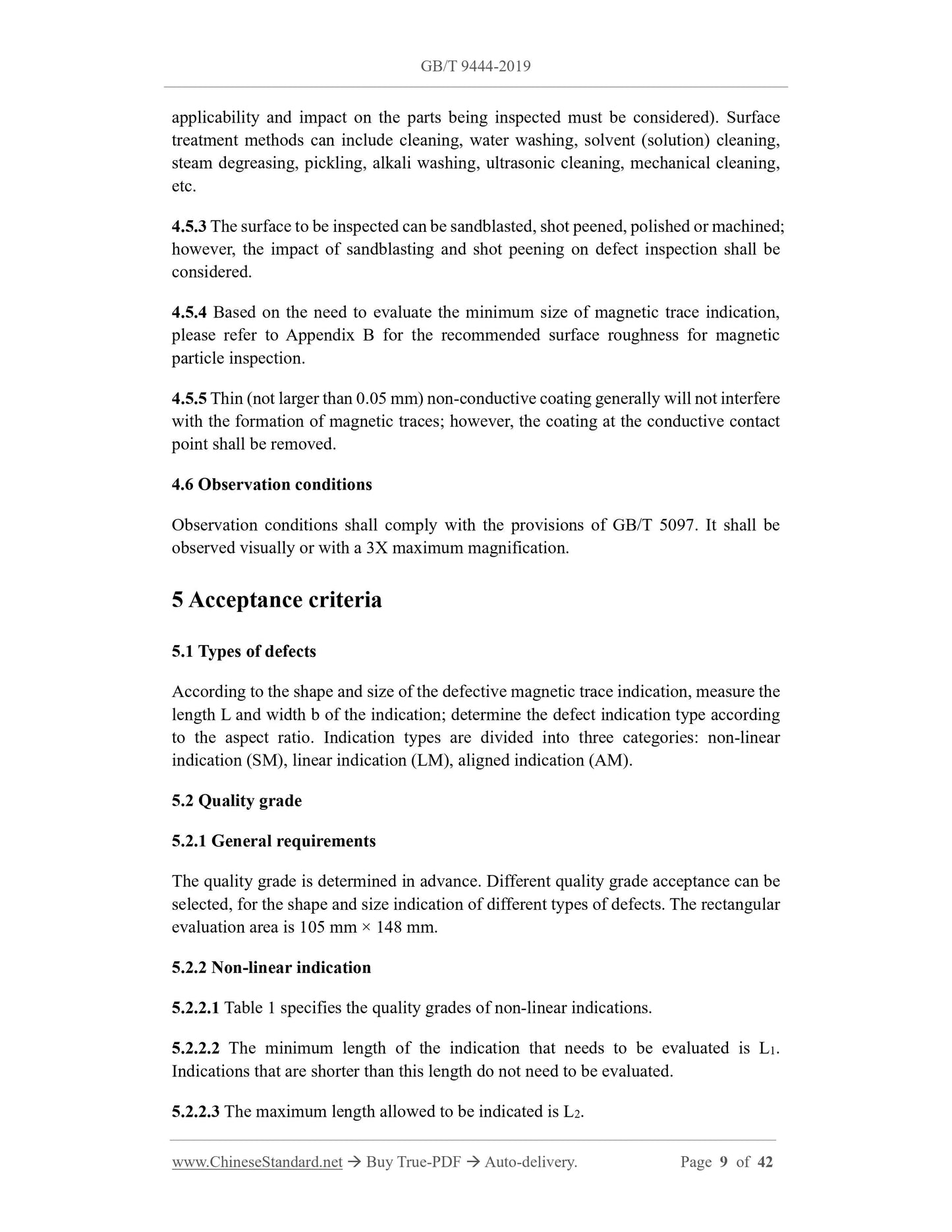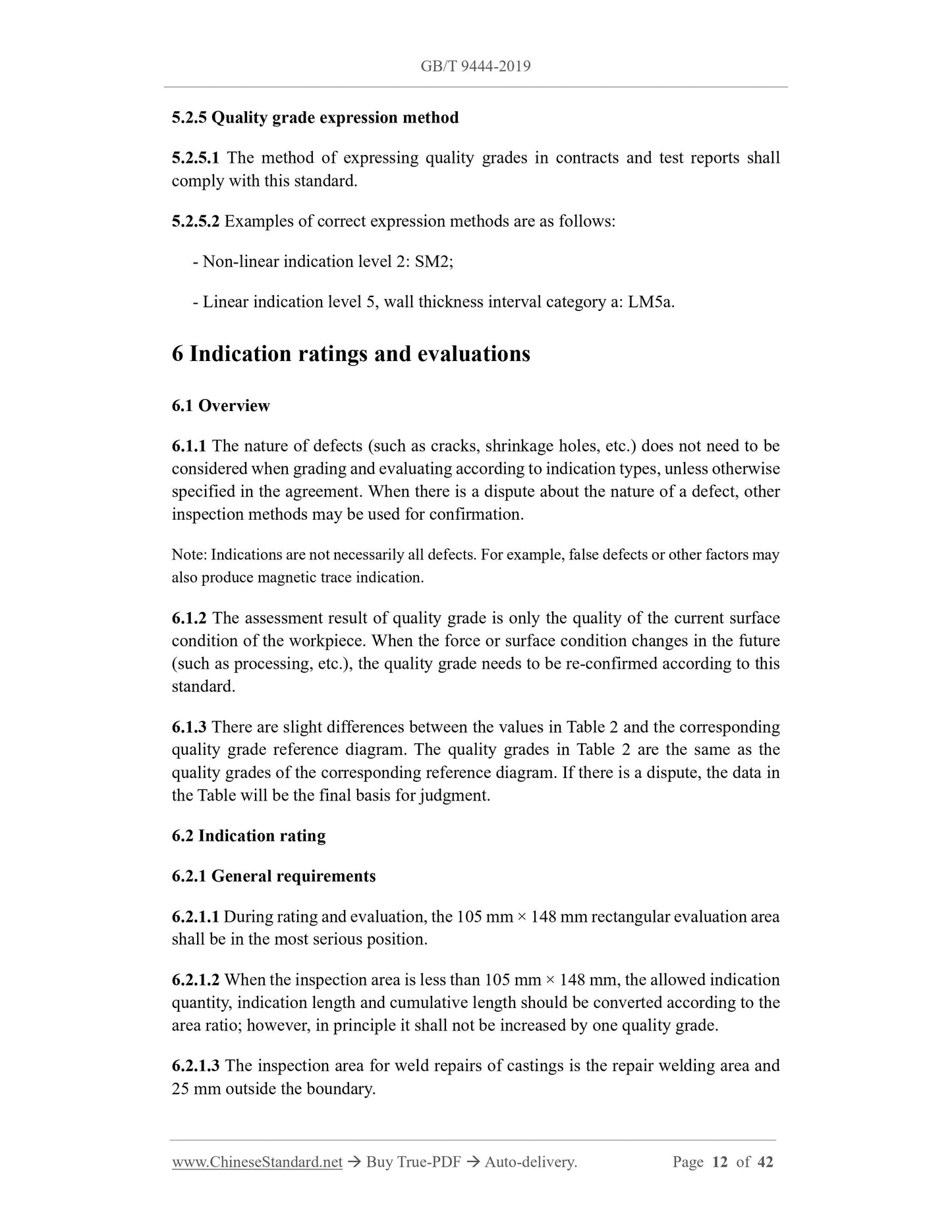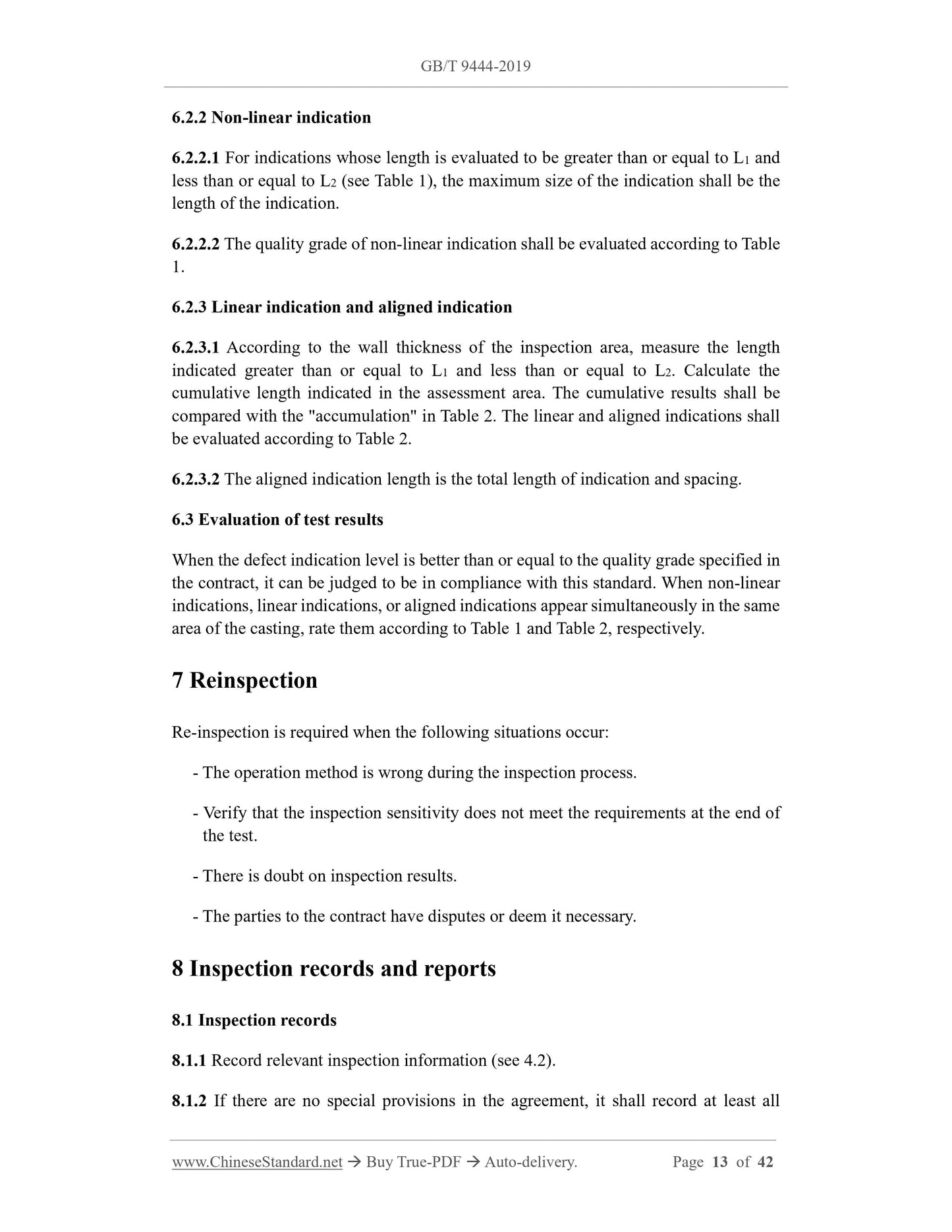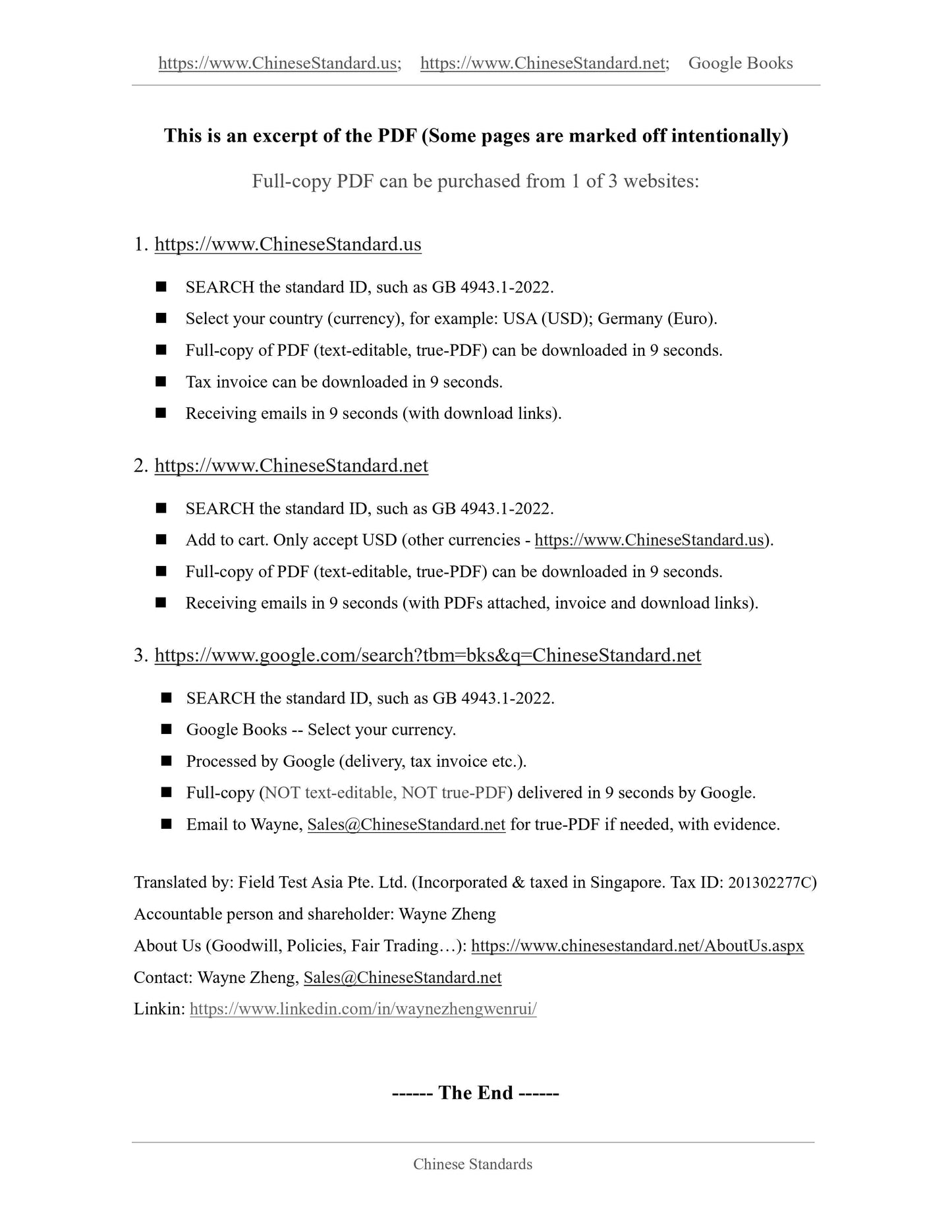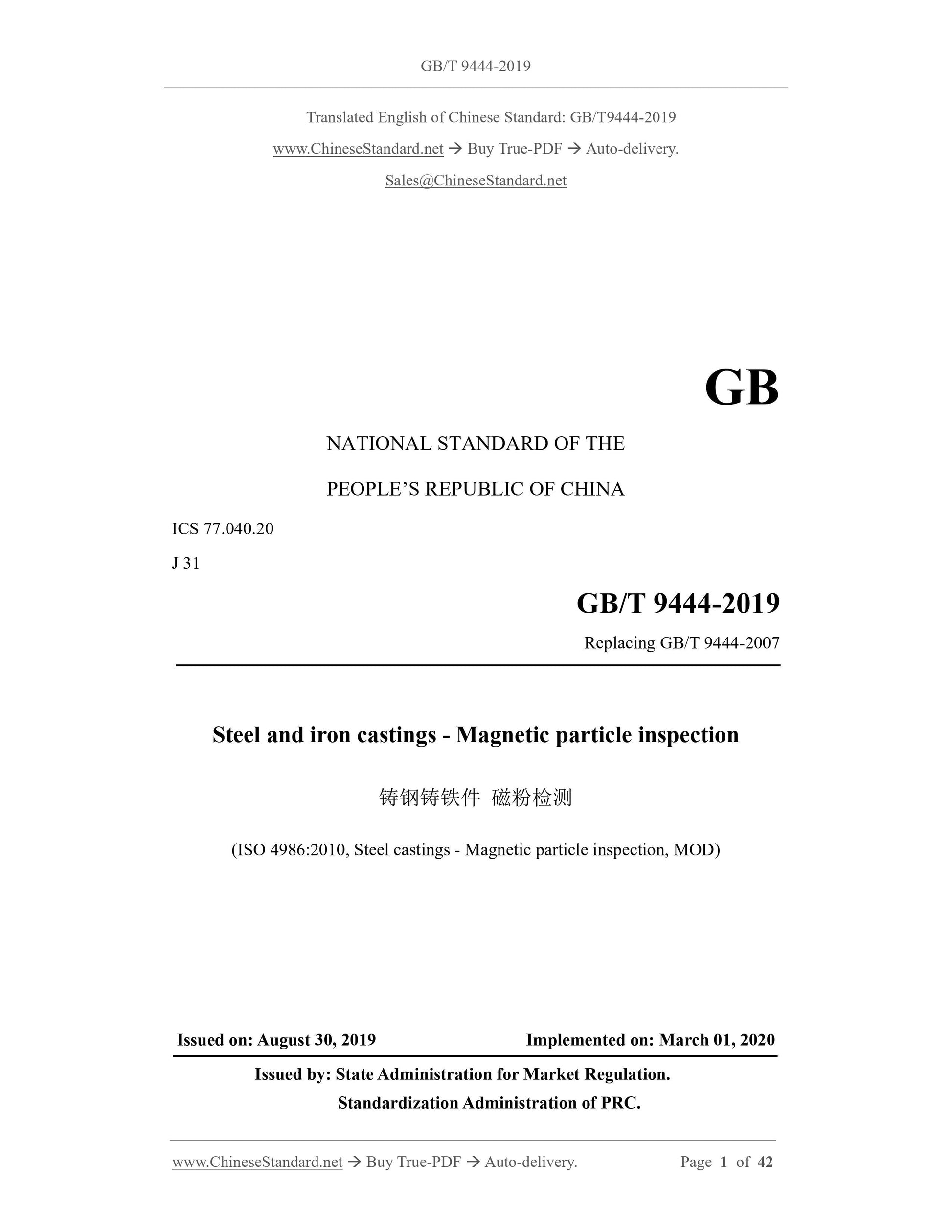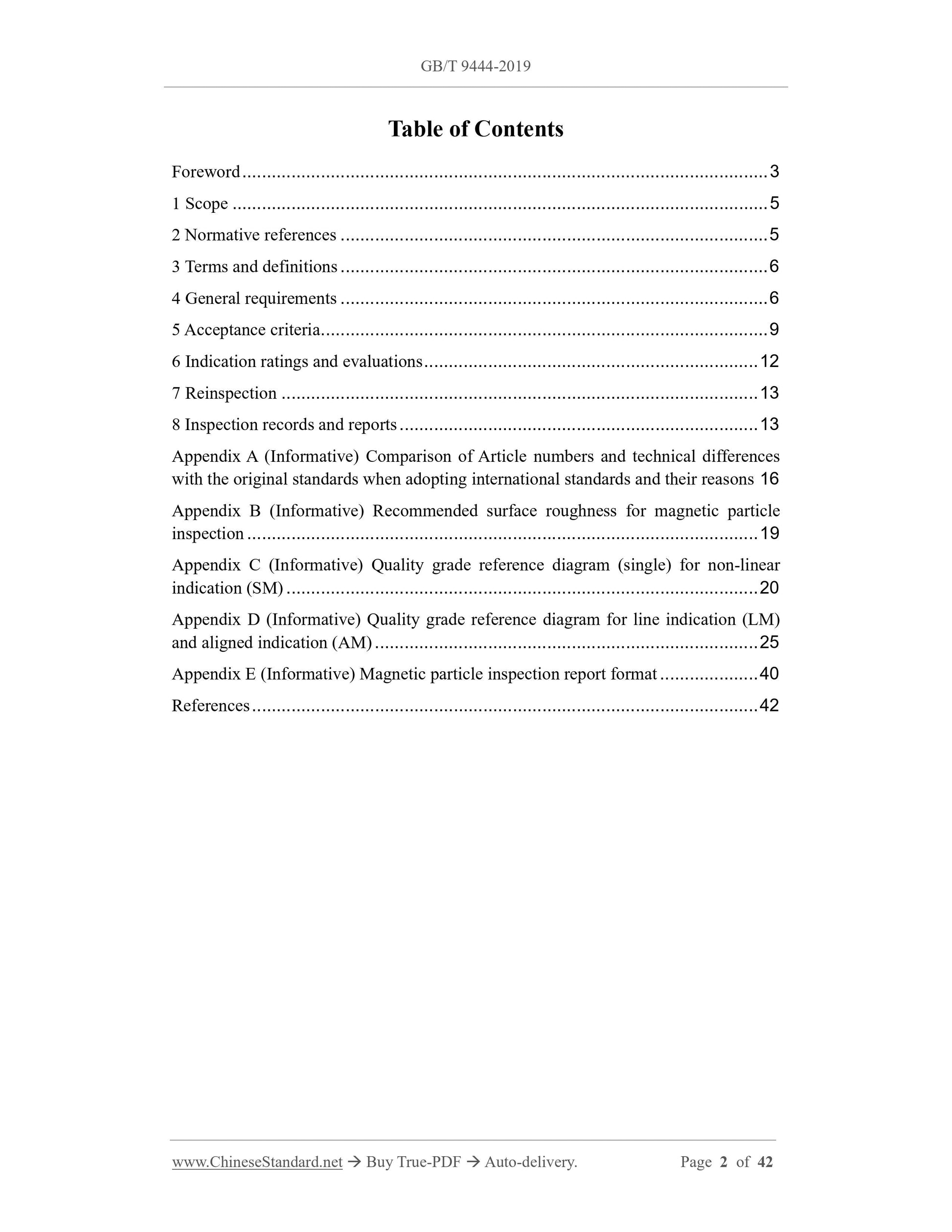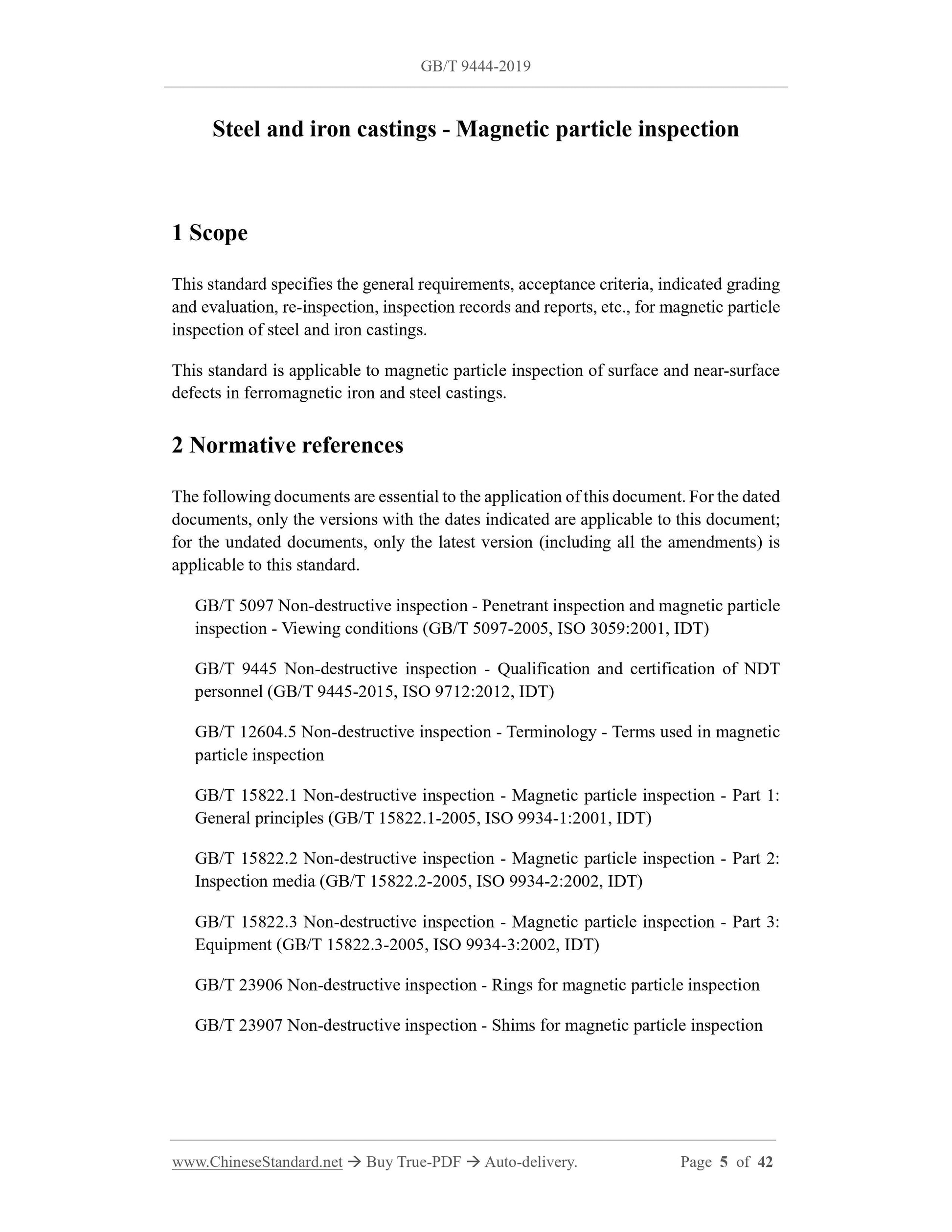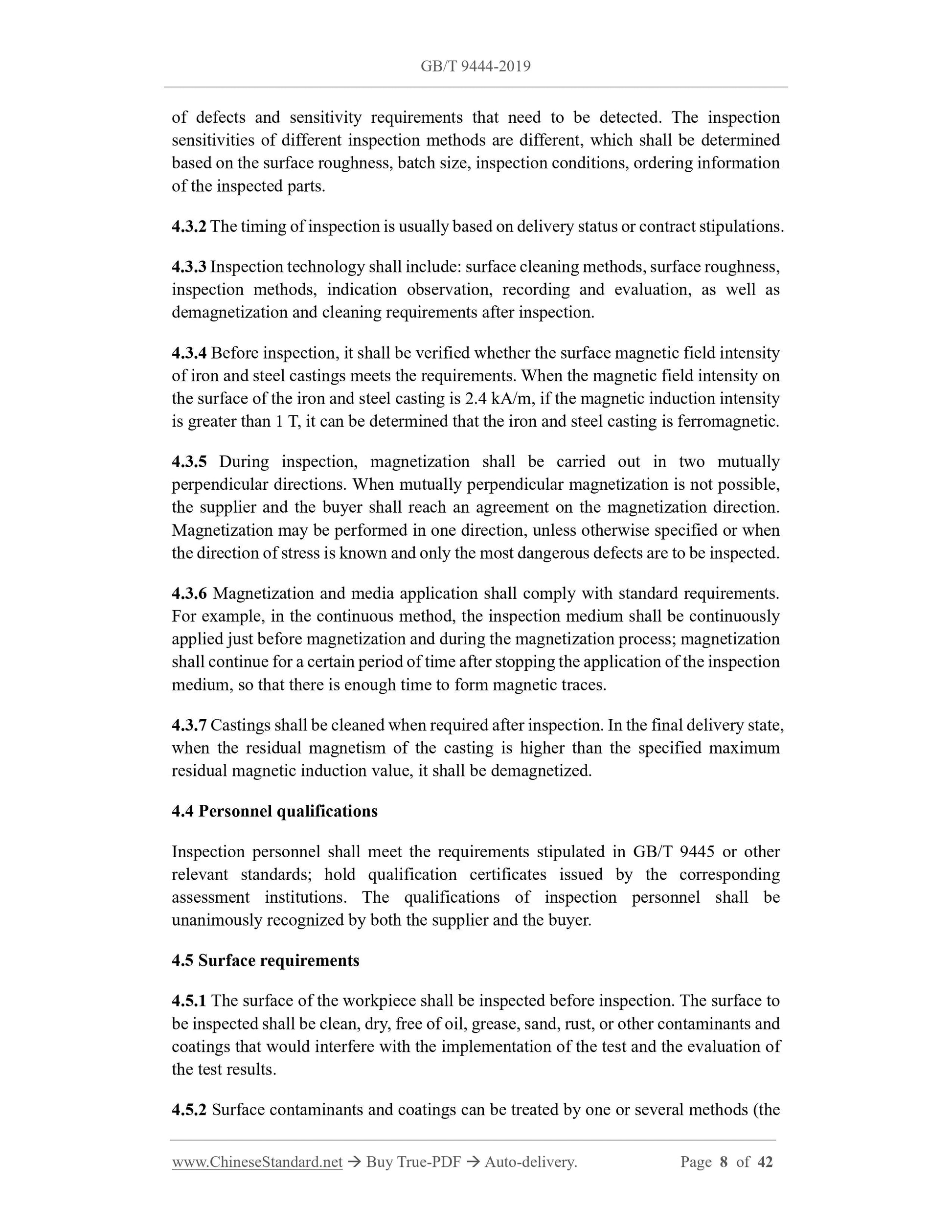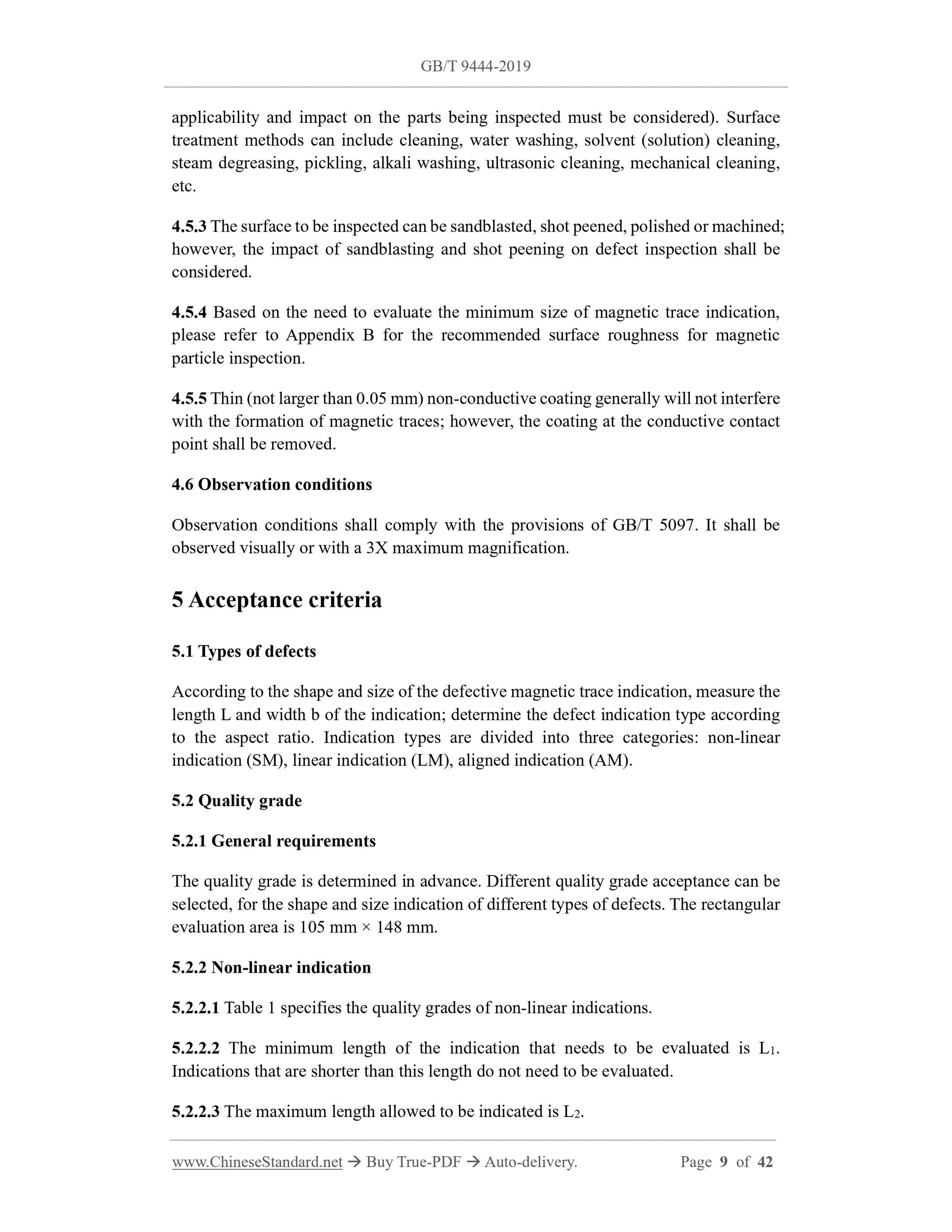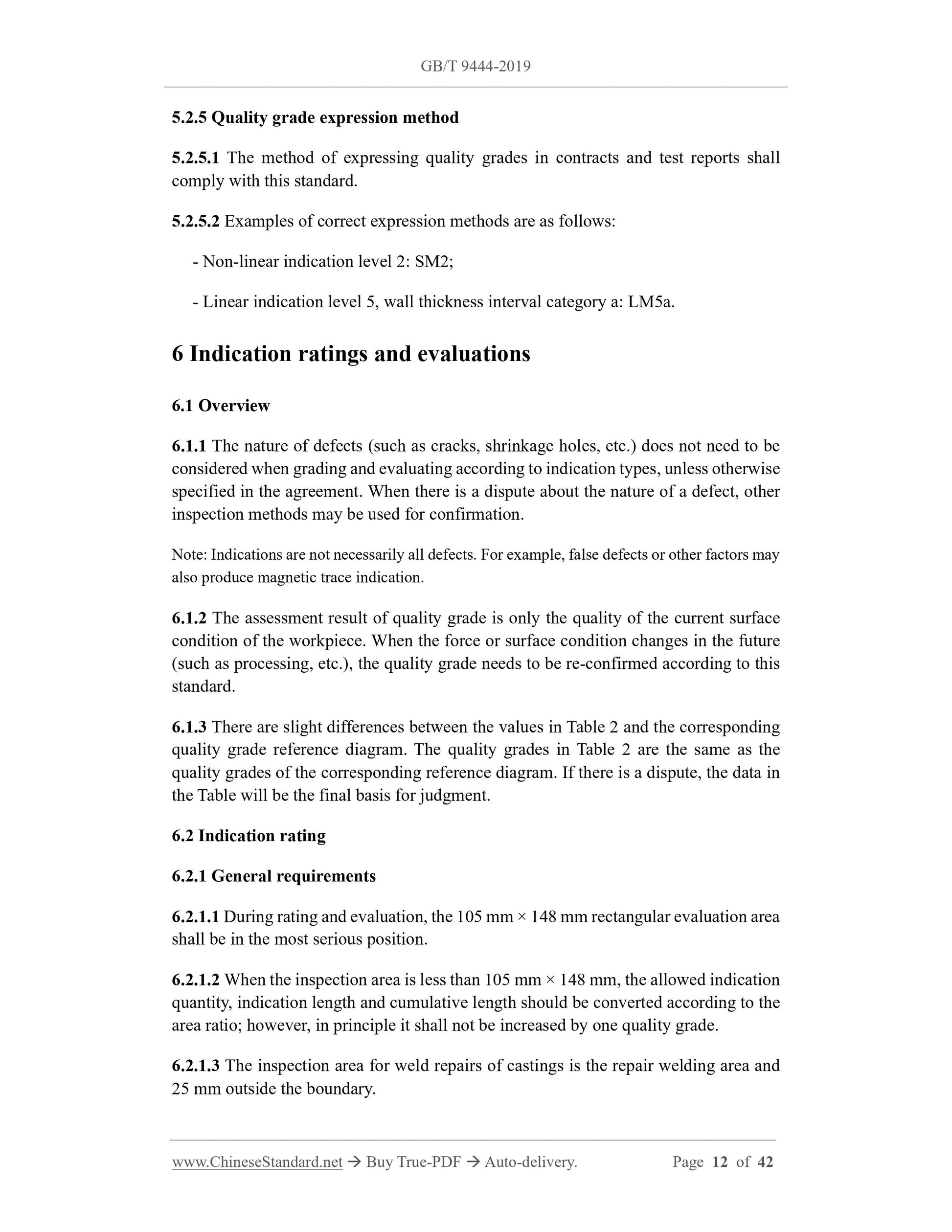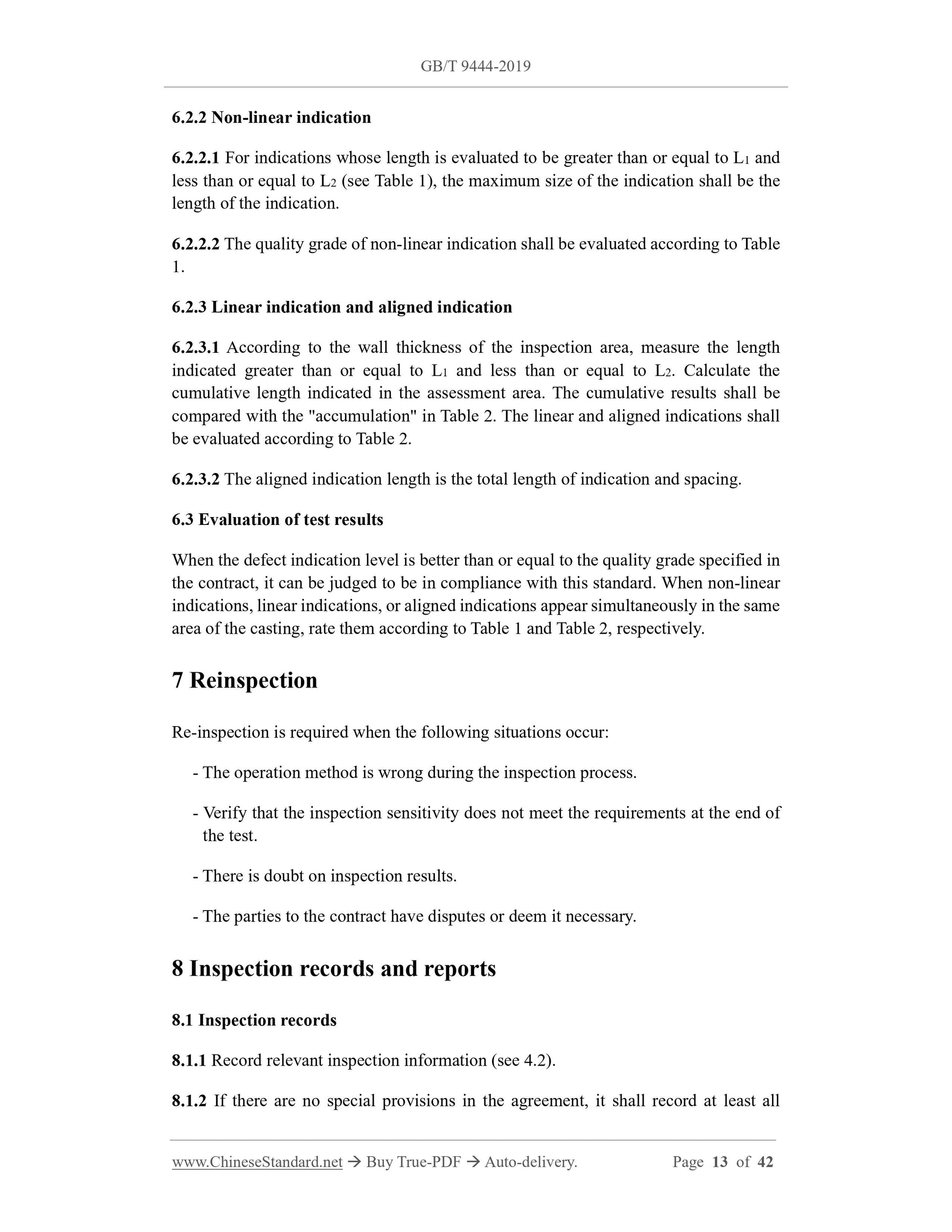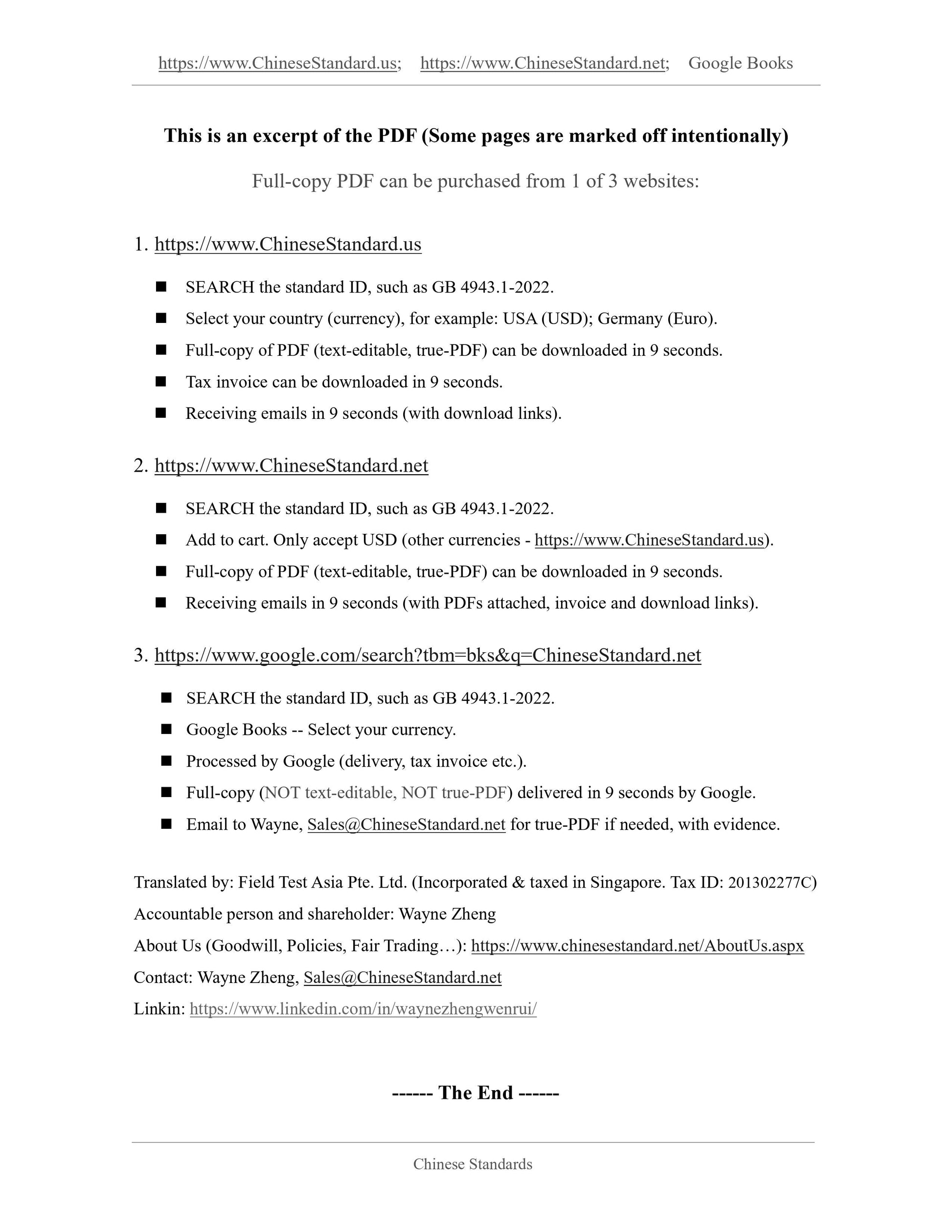1
/
of
8
www.ChineseStandard.us -- Field Test Asia Pte. Ltd.
GB/T 9444-2019 English PDF (GB/T9444-2019)
GB/T 9444-2019 English PDF (GB/T9444-2019)
Regular price
$555.00
Regular price
Sale price
$555.00
Unit price
/
per
Shipping calculated at checkout.
Couldn't load pickup availability
GB/T 9444-2019: Steel and iron castings - Magnetic particle inspection
Delivery: 9 seconds. Download (and Email) true-PDF + Invoice.Get Quotation: Click GB/T 9444-2019 (Self-service in 1-minute)
Newer / historical versions: GB/T 9444-2019
Preview True-PDF
Scope
This standard specifies the general requirements, acceptance criteria, indicated gradingand evaluation, re-inspection, inspection records and reports, etc., for magnetic particle
inspection of steel and iron castings.
Basic Data
| Standard ID | GB/T 9444-2019 (GB/T9444-2019) |
| Description (Translated English) | Steel and iron castings - Magnetic particle inspection |
| Sector / Industry | National Standard (Recommended) |
| Classification of Chinese Standard | J31 |
| Classification of International Standard | 77.040.20 |
| Word Count Estimation | 38,380 |
| Date of Issue | 2019-08-30 |
| Date of Implementation | 2020-03-01 |
| Issuing agency(ies) | State Administration for Market Regulation, China National Standardization Administration |
Share
